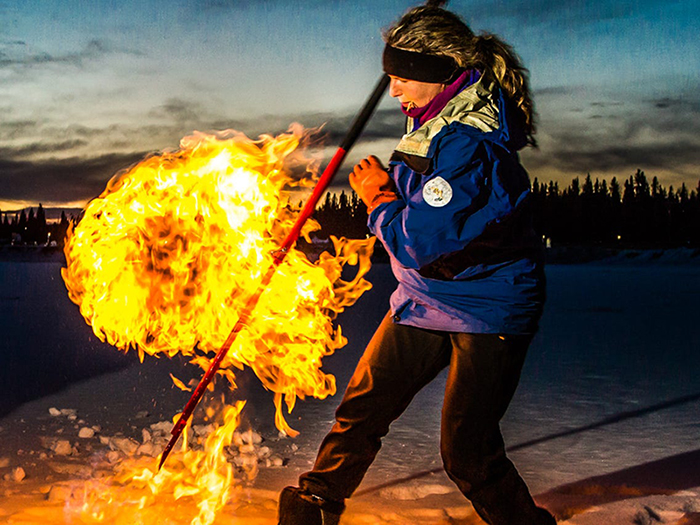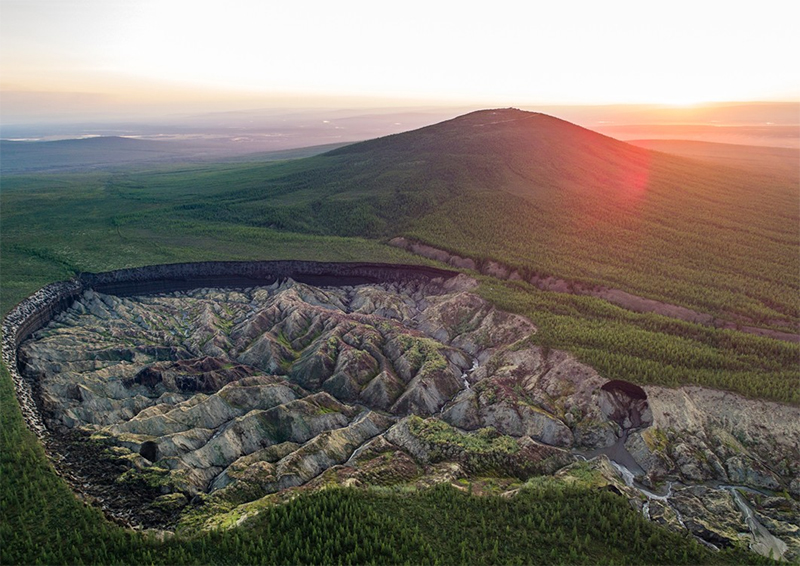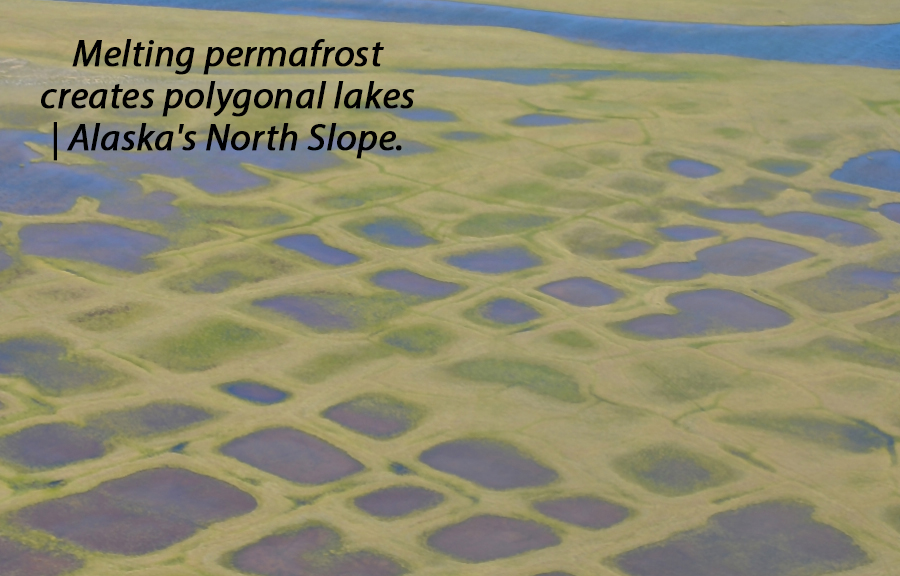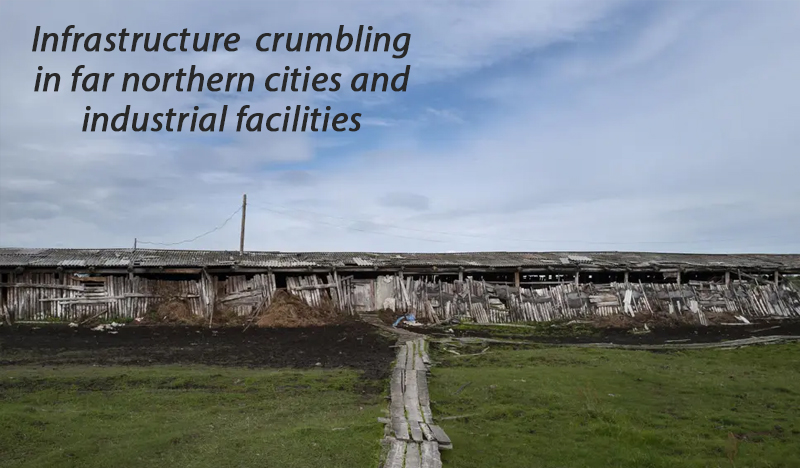
Melting Permafrost & Arctic Methane Plumes
Methane (CH4) is CO2’s meaner older brother, far more destructive but with a shorter attention span. And Methane is indeed a more powerful greenhouse gas (GHG) than carbon dioxide, rated anywhere from 20 to 30 times more potent. Along with Nitrous Oxide and a few others, GHGs trap heat in the atmosphere.
There is a lot of CH4 trapped beneath the surface of the planet, particularly under the permafrost in Siberia, Alaska and other Arctic regions. As the permafrost thaws, the gases trapped below it spew into the atmosphere, creating a fascinating climate feedback cycle with results that are observable in something close to real time.
Megaslump craters transforming Arctic terrain
Megaslumps blasting out all over: These wild formations (also known as thaw slumps) are not new, but suddenly they are growing and multiplying. They are craters formed by methane gases escaping as the permafrost that once capped it disintegrates. We now see footage of grassland wobbling as the substrata becomes wobbly. When the pressure grows to great, there is a blowout. The resulting thermokarst landscape is expanding.
While megaslumps are not new in places like Siberia, the number has been increasing. Megaslumps include land formations such as the ever expanding Hell’s Gate crater in Siberia and thermotarga landscapes?


New Methane sources bubbling from seafloor
Newly discovered underwater methane sources are bubbling gas up from the sea floor to the surface and into the atmosphere. Forming on the edge of the Beaufort Sea in northern Canada and presumably elsewhere, these craters measure up to 90 ft deep.
The original discovery was a few years ago, when scientists noted an area of ocean that was bubbling with methane. The methane concentrations were seven times the expected level.
Infrastructure collapsing as the ground shifts beneath it.
In Alaska, Siberia and northern Canada, buildings, highways and pipelines are falling down. Humans constructed these artifacts under the assumption that the land would stay solid, but it is NOT staying solid.
As much as half of Arctic infrastructure is at high risk of damage, with estimates of tens of billions of dollars for repairs and replacement. This estimate does not include the cost of re-locating potentially millions of residents as the area becomes untenable.
More on global climate refugees.

This is one of the most critical feedbacks driving global warming.
The CH4 feedback cycle is simple to explain, if somewhat more complex in it’s manifestation.
The permafrost (or tundra if you prefer) covers millions of square miles in the Arctic. CH4 has been trapped beneath it for eons, but is no longer.
Summary of global feedbacks.
Feedback Cycle #3
